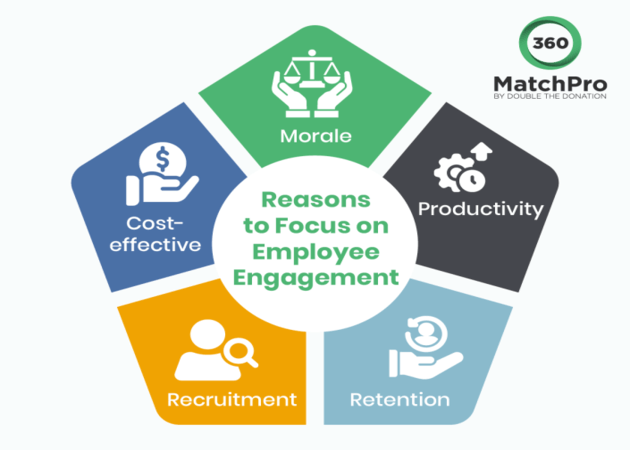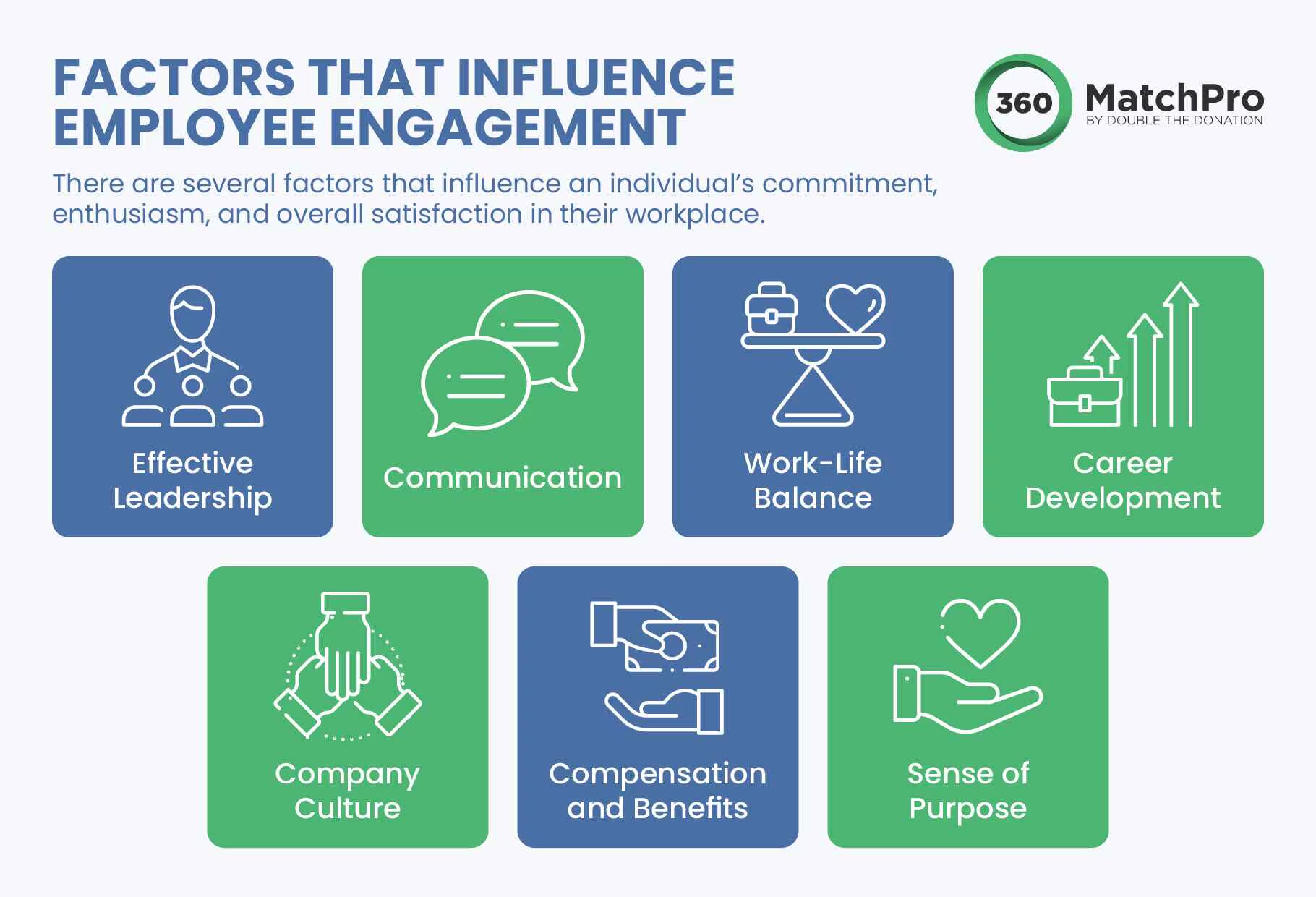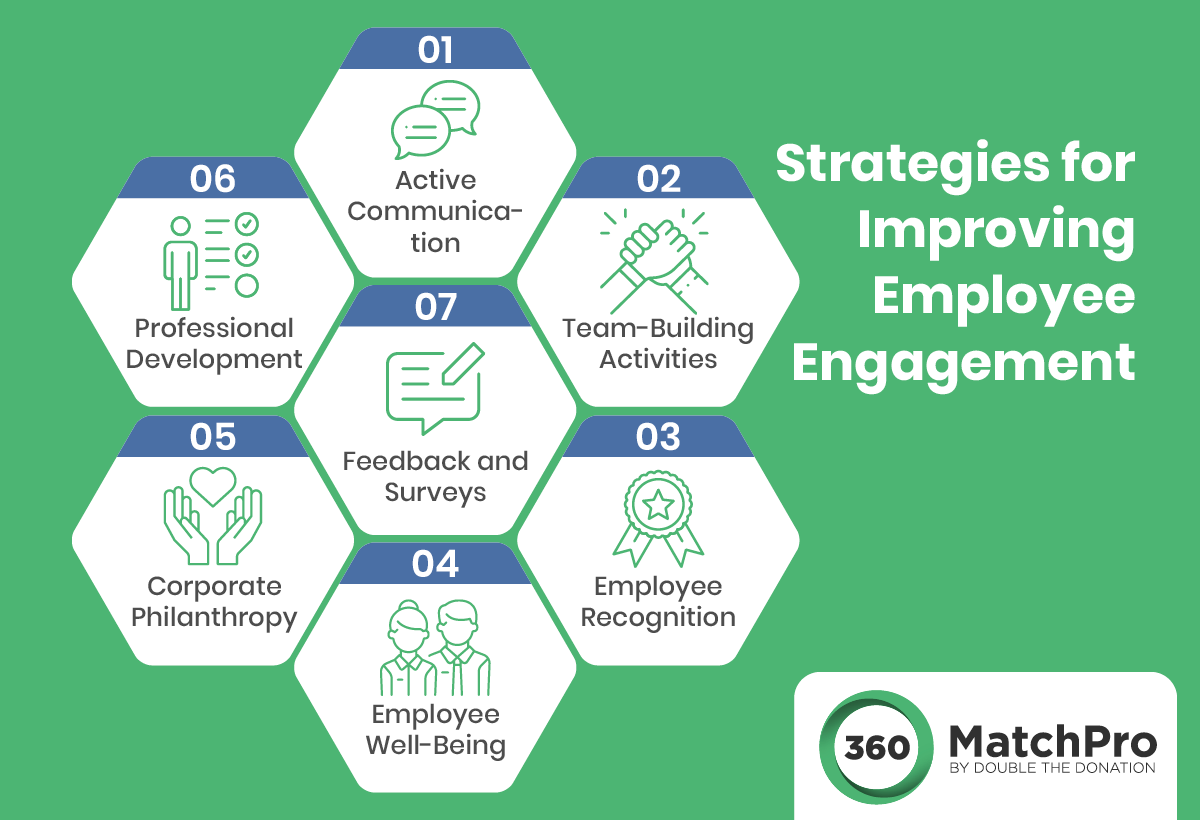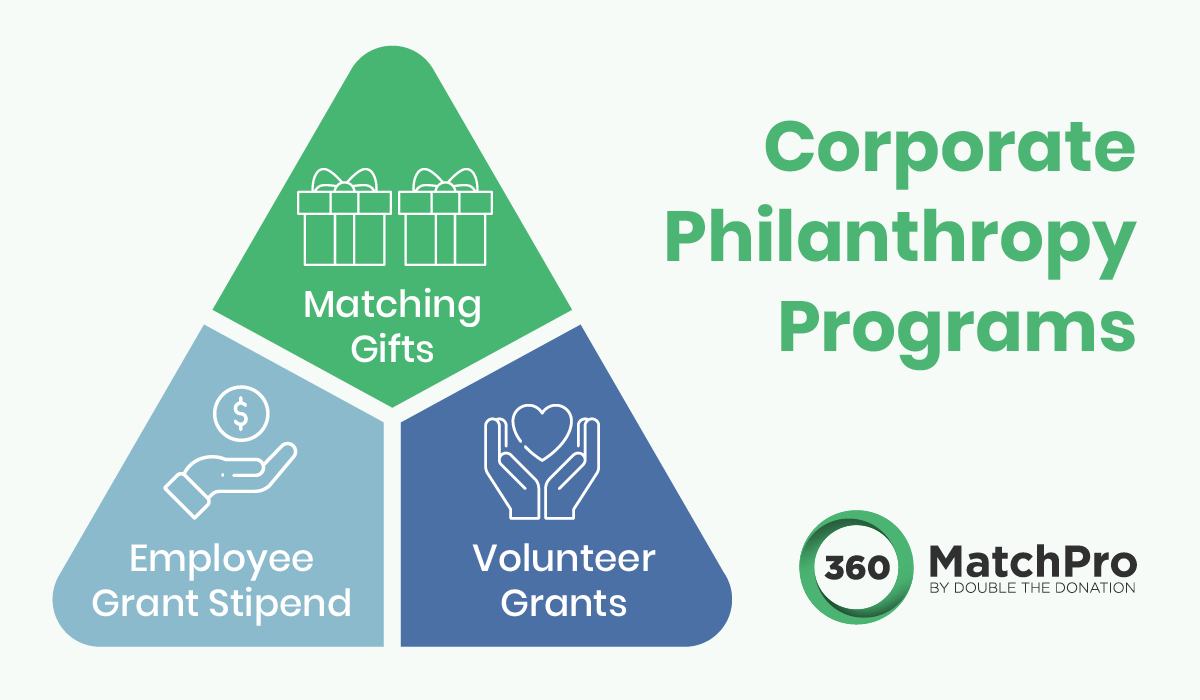How to Improve Employee Engagement: A Complete Guide
Did you know that, according to a Gallup report, unengaged and actively disengaged employees cost companies $8.8 trillion annually? That’s 9% of the global GDP. If you’ve felt the impact of disengaged employees on your organization’s performance, now you know how essential it is to re-engage these team members. And, if your company’s employees already seem engaged, then you know how important it is to maintain that engagement.
While employee engagement may seem like a challenging hurdle to overcome, when you break it down into smaller pieces and understand what it encompasses, it’ll become much more manageable. This guide will help you improve employee engagement by addressing the following topics:
- What is employee engagement?
- Why is employee engagement important?
- What factors influence employee engagement?
- How to improve employee engagement: 7 strategies
By broadening your understanding of employee engagement, you’ll be well on your way to a more productive and motivated workforce. Let’s get started!
What is employee engagement?
Employee engagement encompasses a variety of factors. But at its core, it refers to the connection an employee has with their workplace, especially regarding their feelings of commitment, purpose, and belonging.
When it comes to engagement, there are three different types of employees:
- Engaged. These employees are satisfied with their jobs, enthusiastic about their work, and may even be willing to go above and beyond the minimum effort required of them. Engaged employees offer several benefits to their companies. They’re connected with their organization’s core values, more likely to be loyal to their employer, and more motivated to perform highly.
- Unengaged. These team members are missing the connection to their work and their employer. They’ll show up and do their work, but they’re not passionate about it and are unlikely to do more than the minimum required of them. They’re not happy, but they’re not necessarily unhappy with their work.
- Disengaged. When team members are actively disengaged, they’re resentful that their needs aren’t being met by their workplace. They may be actively searching for other employment opportunities that will better fulfill their engagement needs.
Your goal should be to maximize the number of engaged employees and minimize the number of disengaged employees. While it would be difficult to have a workplace entirely filled with engaged team members, you can certainly try your best to create a positive work environment that motivates your staff to perform at their best.
Why is employee engagement important?

There are numerous reasons why employee engagement should matter to your organization. Here are a few of them:
- Morale. Having employees who are engaged with their work boosts morale at your organization, leading to a more positive work environment. To support this idea, a study found that highly engaged workplaces saw 41% lower absenteeism.
- Productivity. As a side effect of increased morale, engaged team members are also more productive. They’re more motivated to work hard to support their organization’s goals, leading to higher overall performance.
- Retention. Engaged employees are often happy with their jobs, making them more likely to remain at your organization. This is hugely beneficial, as that means that you’ll be able to save on costs and time for onboarding and training new employees. Instead, you’ll retain experienced team members, leading to greater organizational success.
- Recruitment. Depending on the state of the job market, it’s important for your organization to set itself apart from others to attract new talent. As only about 23% of employees are engaged with their work, having a robust employee engagement strategy will help differentiate your organization from others. Plus, your engaged employees are also more likely to discuss the connection they have to their job, effectively improving your reputation as an employer through word-of-mouth.
- Cost-effectiveness. Disengaged employees cost their companies about 18% of their annual salary. When you consider how many employees your organization has, that number multiplies. By focusing on employee engagement, you’ll cut down on these costs, making your organization more cost-effective.
If you’re serious about improving employee engagement at your organization, start by assessing the general state of your workforce. Consider if most of your employees are engaged, unengaged, or disengaged. Keep in mind that you should not punish your team members for lack of engagement—that will only lead to increased feelings of resentment. Focus on the carrot instead of the stick by implementing programs that incentivize and reward engagement.
What factors influence employee engagement?
A variety of factors influence each employee’s commitment, enthusiasm, and overall satisfaction in their workplace. While influential factors vary from person to person, there are some common ones that impact employee engagement, such as:

- Effective Leadership: Strong, supportive leaders who communicate a clear vision, provide guidance, and value employee contributions can foster employee engagement.
- Communication: Open, transparent, and two-way communication channels within the organization promote trust and understanding among your workforce.
- Work-Life Balance: Especially when dealing with a hybrid or fully remote workforce, a balance between work and personal life helps reduce stress and contributes to higher engagement.
- Career Development: Opportunities for growth, skill development, and advancement within the organization have proven to motivate employees.
- Company Culture: A positive workplace culture characterized by respect, inclusivity, appreciation, and a sense of belonging enhances engagement.
- Compensation and Benefits: Fair and competitive compensation packages with desirable benefits contribute to individuals’ engagement.
- Sense of Purpose: FundraisingIP’s employee engagement guide explains that employees should know how their specific contributions impact society, whether they’re working for a nonprofit or giving back via workplace giving.
As you can see, several factors impact your ability to keep team members motivated. These are just the beginning. By understanding common sources of disengagement, you can develop a plan for addressing them. That’s why we’ll discuss strategies that address these factors next.
How to improve employee engagement: 7 strategies

To help you boost employee engagement at your organization, we’ll cover seven strategies that will incentivize team members to connect with their work and perform at their best. Let’s dive in!
1. Active communication.
All workplaces require communication to some degree, which is why active communication is essential. Consider how this strategy works between the following groups of people and your employees:
- Team members. Communicating between team members is crucial for operational success. Many roles will require active communication between one another, such as when employees are collaborating on a project together. Establishing clear communication channels will reduce frustration and lead to greater employee engagement.
- Managers. Managers delegate tasks, give feedback, and pass down leadership guidance to employees. Their messages are key to staff members fulfilling their work requirements. Plus, their feedback is valuable for keeping employees engaged—after all, positive feedback after you’ve done a great job is a great motivator!
- Leadership. A common pitfall of employee engagement occurs when staff members aren’t in sync with leadership plans, which leads to frustration and disengagement. To avoid this situation, leadership should clearly communicate their expectations and plans when they can, so that employees stay in the know.
Not only must you stress the importance of communication to all of your employees, but you must also make it convenient for team members. Facilitate dialogue between team members by investing in software solutions that make it easy to get in touch with one another. This is especially important if you have remote employees, as it can be more difficult for them to connect with their coworkers when they don’t see each other in person.
2. Team-building activities.
Foster a sense of community and camaraderie amongst employees by hosting regular team-building activities. This will help strengthen relationships among employees, building a more cohesive workplace environment. Plus, it will improve communication and collaboration, as team members will be able to interact with each other in a more relaxed space.
A few ideas for team-building activities you can bring to your organization include:
- Team dinners. These events don’t have to strain your budget—they can be as informal as drinks at a bar. However, they provide an opportunity for employees to socialize and create connections with one another.
- Birthday celebrations. Birthdays are special to many individuals. Support a welcoming and positive workplace atmosphere by purchasing a cake and throwing a small celebration for any employee whose birthday falls on a workday.
- Work anniversaries. Encourage retention by celebrating your employees’ annual work anniversaries. Ensure that the celebration fits the anniversary—after all, if someone has been working at your organization for a decade, you’ll probably want a bigger show of appreciation than you would for someone celebrating their two-year work anniversary.
- Hobby get-togethers. If your employees have overlapping interests, encourage them to form hobby groups. That way, they’ll have a chance to connect over an activity that’s not work-related and form tighter bonds.
- Sports tournaments. A sports tournament is an excellent team-building activity since it strengthens your employees’ ability to collaborate. These skills will translate to the workplace as well, improving productivity within the office.
- Volunteer groups. Some individuals are particularly passionate about certain charitable causes. If your employee base contains many of these individuals, organize group volunteer outings for causes they’re interested in. Your employees will see that you genuinely care about their interests, which will make them think more positively about their work. Offering volunteer time off, or time off allocated specifically for volunteering activities, can encourage even more employees to take part.
When it comes to team-building activities, feel free to get creative! From escape rooms to painting sessions, there are a myriad of fun events you can host to keep your employees engaged and excited to work for your organization.
3. Employee recognition.

Motivate employees to perform at a high level by recognizing top performers. You can appreciate your employees privately in the following ways:
- Thank-you notes. Write a heartfelt thank-you note to an employee who went above and beyond for your last project or finished their tasks before the deadline. Or, spice things up with a customizable and interactive eCard instead of the traditional pen and paper.
- Gifts. Give top-performing employees gifts such as flowers, gift cards, snacks, office supplies, and more. This show of appreciation will increase employee engagement, as they’ll see that their hard work is not overlooked.
- Extra paid time off (PTO). Although this may seem counterintuitive, rewarding high achievers with extra PTO tells them that you’re looking out for them. They’ll feel seen, and they can use that PTO to rest and recharge before jumping back into their work.
Additionally, you can also publicly recognize your employees in these ways:
- Employee spotlight. If you have a company-wide newsletter or social media page, shout out your highest-performing employees. Be sure to congratulate these team members if you see them in person to further engage them and encourage them to keep up the good work.
- Employee awards. Present top employees with an award to commemorate their achievements. This can be a trophy, certificate, or plaque. That way, they’ll feel special and be more engaged with their work.
- Employee of the month. Combine the two previous ideas with an employee of the month program. Every month, choose the top-performing employee, thank them for their work publicly, and present them with an award.
Aside from leadership recognition, peer-to-peer recognition is also a great motivator for employees. Center peer-to-peer recognition by encouraging employees to point out and thank each other for a job well done. Not only will team members receive positive reinforcement for good behaviors, but they’ll also be more engaged with their coworkers, as they’ll be looking out for examples of high-achieving behavior.
4. Employee well-being.
By now, you already understand that one of the keys to employee engagement is to show employees that you genuinely care about them. What better way to back that up than by centering employee well-being at your organization?
If you’re looking for ways to focus on and prioritize your employees’ well-being, consider the following ideas:
- Flexible work hours. For example, instead of requiring your employees to be in the office from 8 AM to 5 PM, instead, tell them that they need to work 8 hours per work day between the hours of 7 AM and 7 PM. That way, they have a little bit of flexibility to choose their schedule.
- Remote or hybrid work. Allow employees to work from home to save them the time of their daily commute. Or, if you’re not ready to go fully remote, consider a hybrid work format instead—ask employees to work in the office for two days a week and allow them to work from home for the remaining three.
- Sick time. Instead of requiring team members to take sick time out of their vacation time, offer dedicated sick time as part of your compensation package. That way, employees won’t need to worry about using up all their vacation time, encouraging them to get the rest they need. Plus, you’ll minimize the chances of people coming to the office sick and infecting other employees, keeping everyone healthy and happy.
- Healthy food options. If your employees work from an office location, consider having catered, healthy meal options. That way, you’ll show staff members that you care about their well-being and want them to remain healthy.
- Mental health support. In addition to physical health, mental health is also extremely important. Offer mental health support by providing a list of resources and encouraging team members to seek help if they need it. Plus, you can allow employees to use sick time for mental health days, preventing burnout.
To keep employees engaged and show them your dedication to their well-being, brainstorm and implement a holistic wellness strategy at your organization. This includes physical, mental, and spiritual health. Carefully consider how you can support each aspect of your employees’ health and be open to suggestions so that your employees know that you genuinely want the best for them.
5. Corporate philanthropy.

Nearly 70% of employees say that they wouldn’t want to work for a company without a strong purpose. And 90% of employees who work at companies with a strong sense of purpose say that they’re more inspired, motivated, and loyal. This means that one of the pillars of strong employee engagement lies at the intersection of your organization and nonprofit work—corporate philanthropy.
Engage employees with purpose through the following corporate philanthropy programs:
- Matching gifts. In a matching gifts program, your organization will commit to matching donations that your employees make to eligible nonprofits. For example, if you match donations at a 1:1 ratio and an employee donates $50 to their favorite charity, you would also give $50. While 91% of companies match donations at a 1:1 ratio, a more generous ratio can communicate a greater commitment to supporting employees’ philanthropic interests.
- Volunteer grants. Since employees are purpose-driven, they’ll likely spend some of their free time volunteering for a nonprofit. Show your support for their passions by providing volunteer grants, where you pledge to donate a certain amount to a nonprofit for every employee who meets a certain threshold of volunteer hours there. For example, you could pledge a $100 donation for employees who volunteer for at least 25 hours.
- Employee grant stipend. With an employee grant stipend, you designate an amount of money that employees automatically can donate to a nonprofit per year as part of their compensation. For example, you could allocate $50 per employee that they can donate annually to a nonprofit of their choice.
Stay on top of employee engagement trends by implementing a corporate philanthropy program at your organization. Consider investing in corporate social responsibility (CSR) software to facilitate your efforts and boost employee participation. With the growing interest in nonprofits and other mission-driven organizations, this move will surely cement a connection between your employees and their work. Plus, they’ll see your organization in a more positive light, improving your reputation as well.
6. Professional development.
The potential to grow is an important factor for any employee deciding if they’d like to continue with their current job. To keep your team members engaged, offer professional development opportunities such as:
- Training and certifications. Give employees a stipend to spend on training and certification opportunities to build their skills in areas that interest them.
- Online courses. Provide a list of relevant online courses that employees can use to improve their knowledge for their current job.
- Mentorship programs. Create a mentorship program where new employees can ask questions and seek advice from a more experienced team member.
- Conferences. Send employees to conferences so they can network with other individuals and gain more insight into your industry.
With 86% of employees willing to switch jobs for ones with more chances to grow, your organization needs to support the professional development of your team members. Consider creating a library of resources that employees can peruse at their leisure, providing them plenty of opportunities to stay engaged by growing their knowledge.
7. Feedback and surveys.
We mentioned earlier that communication is key, especially between leadership and staff members. But communication is a two-way street, which means that just as employees need your organization’s leaders to communicate with them, your leaders should create opportunities for employees to voice their opinions too.
Sometimes, the best way to improve employee engagement is to go back to the source—your staff members! Ask them to provide their feedback by sending out surveys.
Some of the questions you can ask your employees include:
- How satisfied are you with your job?
- What do you enjoy most about your work?
- What do you enjoy least about your work?
- Do you feel appreciated for your work?
- Are you happy with the level of communication you receive from leadership, managers, and team members?
- What can we do to create an environment where you are excited to work?
- What can we do to support your work-life balance?
- How can we create more opportunities for social interaction?
- What do you think we can improve to enhance your experience?
As you review the responses to these questions, remember to keep an open mind. If the majority of your employees highlight the same issue, it’s worth taking a deeper look into. Genuinely consider their suggestions for whether they would improve engagement at your organization.
Additional resources
Employee engagement is a tricky concept for organizations to master. However, with these seven strategies, you’re well on your way to reaping the benefits of a more engaged workforce.
Remember that employee engagement isn’t static—you’ll need to adjust your strategy as your organization grows. Constantly be on the lookout for new ways to show team members that you care about them and want them to have a good experience working for you.
If you’re interested in learning more about employee engagement, check out the following resources:
- A Full Guide to Employee Engagement Tools + 20 Top Picks — Make employee engagement more convenient for both you and your employees by investing in a software solution. This guide goes over the top options you should consider.
- What is Corporate Social Responsibility? Guide & Examples — Corporate social responsibility is an increasingly important part of any organization’s employee engagement strategy. Learn more about it in this guide.
- Developing a Matching Gift Program: A How-To Guide — Matching gift programs are one of the top ways to engage employees with corporate philanthropy. Discover how to develop a program for your organization with this complete guide.



